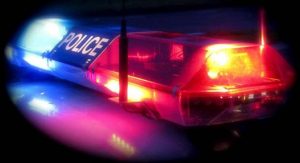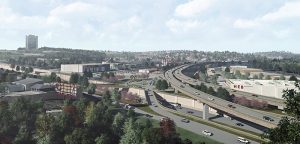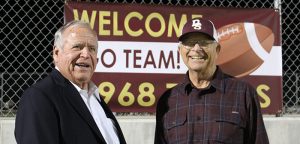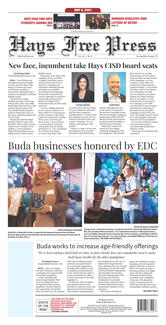By Moses Leos III
The idea of using railroad cars to repair a bridge damaged by the Memorial Day Flood has come to fruition for Hays County.
At a cost not to exceed $150,000, Hays County on Monday began the process of installing railroad cars as a temporary solution to the damaged Post Road Bridge that spans the Blanco River in San Marcos.
While Hays County’s fix will only be in operation for six months, Hays County Precinct No. 4 Commissioner Ray Whisenant said a “number of safety...
By Moses Leos III
The idea of using railroad cars to repair a bridge damaged by the Memorial Day Flood has come to fruition for Hays County.
At a cost not to exceed $150,000, Hays County on Monday began the process of installing railroad cars as a temporary solution to the damaged Post Road Bridge that spans the Blanco River in San Marcos.
While Hays County’s fix will only be in operation for six months, Hays County Precinct No. 4 Commissioner Ray Whisenant said a “number of safety issues” led to the county moving forward on the process.
“The primary purpose for putting it there is for emergency responders,” Whisenant said. “Not saying convenience isn’t important, but the emergency response [factor] is equally as important as convenience.”
Hays County’s temporary bridge, which is slated to be open by mid-December, involves the installation of two 89-foot rail cars, which are 8 ½ feet wide. They were purchased by the Auditor’s office through an order system.
The temporary bridge will only be wide enough for a single car in each direction. It will use the metal flooring of the railcars, and will feature a “diamond plate,” friction-bearing surface.
In addition, Whisenant said the bridge would feature signage, which will include a yield and stop sign.
For Whisenant, the motive behind the installation of the temporary bridge was to provide access for a road citizens use “quite often.” While he didn’t have exact traffic counts, Whisenant said “moderate to light traffic” passed through the bridge prior to the Memorial Day Floods.
But as the bridge will provide the convenience for citizens, Whisenant said the temporary bridge would help first responders.
“Whatever winds up being convenient for people, it winds up being facilitated to emergency responders,” he said.
According to Whisenant, the idea of using railcars to fix damaged bridges began roughly six months ago.
He said the county was made aware of successful temporary and permanent bridges in Louisiana, Mississippi and Oklahoma that used railcars.
“We came to understand others have used the solution with similar circumstances with success,” Whisenant said.
The county hoped to employ railcars to repair the Fischer Store Road bridge in Wimberley, which was also destroyed during the May flood.
But he said a combination of factors influenced the county’s decision to not move forward with the railcar concept at the Fischer Store Road Bridge.
One struggle was working with property owners to attain right-of-way for the temporary bridge. A second factor was the Texas Department of Transpiration’s decision to move up the construction of a permanent fix for Fischer Store Road.
But over the past four months, Whisenant said the county started to tinker with the idea of using railcars at Post Road. He said the project “didn’t hinge or depend on Fischer Store,” but that it could parallel the idea for repair.
“The railcar application at Post Road was more applicable than it would have been at Fischer Store,” Whisenant said.
But the county will continue with its plans to reconstruct a permanent bridge. It will mean the temporary bridge will be removed within six months.
Whisenant said the permanent bridge would fall within the current right-of-way, and could be built at an elevation that “would be subject to flooding.”
A study is ongoing for the permanent bridge and will be completed in three to four months.
According to Whisenant, TxDOT will place the project up for bid by July or August 2016. If the contract is awarded, construction could begin by Sept. 2016.
He anticipates the permanent bridge to be completed by summer 2017.
Whisenant believes the rail cars can be utilized to assist in fixing other damaged bridges.
There are other places that need bridge reconstruction in the future,” Whisenant said. “The railcars could be used again for the purpose of safety and convenience.”












